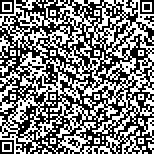| 摘要: |
| 利用生物和化学方法研究了大型海藻龙须菜(Gracilaria lemaneiformis)与赤潮生物锥状斯氏藻(Scrippsiella trochoidea (Stein)LoeblichⅢ)共培养时二者的生长情况,以及二者之间营养盐NO3-、PO43-竞争的情况。结果显示,两者共培养时,由于龙须菜的影响,锥状斯氏藻的生长周期以及所能达到的最大细胞密度与对照组相比都有所下降,且受抑制程度随龙须菜起始密度的增大而增强;而锥状斯氏藻对于龙须菜的生长不构成明显的影响。当龙须菜起始密度较低时(0.2、0.1gFW/L),共培养组微藻细胞密度的下降是因为水体中NO3-的耗尽;当龙须菜起始密度较高时(0.5gFW/L),共培养组微藻细胞密度的下降可能是因为龙须菜与微藻之间的“互荫效应”,或者龙须菜能够分泌出足够浓度的克生物质所致。龙须菜可作为有效吸收营养盐的大型海藻,用以降低近海水域富营养化程度及有害赤潮发生的几率。 |
| 关键词: 龙须菜 锥状斯氏藻 共培养 营养竞争 |
| DOI: |
| 分类号: |
| 基金项目:国家杰出青年基金项目,40025614号;中国科学院创新工程项目,KZCX3-SW-214号;国家重点基础研究(赤潮“973”)项目,2001CB409710号 |
附件 |
|
| COMPETITION ON NUTRIENTS BETWEEN GACILARIA LEMANEIFORMIS AND SCRIPPSIELLA TROCHOIDEA(STEIN) LOEBLICH Ⅲ |
|
ZHANG Shan-Dong1,2, SONG Xiu-Xian1, WANG You1, YU Zhi-Ming1
|
|
1.Key Lab of Marine Ecology & Environmental Sciences,Institute of Oceanology,Chinese Academy of Sciences,Qingdao,266071;2.Graduate School,Chinese Academy of Sciences,Beijing,100039
|
| Abstract: |
| In recent years, harmful algal blooms (HABs) occurred in more localities and more frequently than before, which have caused serious problems in coastal marine ecological environment and massive mortality of cultured organisms in China. Various mitigating methods, physical or chemical ones, have been applied, but the results were unsatisfactory with probable negative impact on marine ecosystem. Biological strategy was therefore suggested recently for its potential HABs mitigating ability with fewer side effects. Using macroalgae to remove microalgae is an alternative measure advocated by many scientists for its combined merit. Macroalga is popular in aquatic ecosystem. They absorb nutrients quickly from water to build their bodies. Some of them could also release certain allelopathic materials to kill microalgae cells. When harvested, they can carry lots of nutrients from the water column onto the land. To study the feasibility of applying macroalgae in HABs mitigating, macroalga Gracilaria lemaneiformis, a common species in China coasts, was selected to study its interference with and competition for nutrients against a bloom-causing dinoflagellate Scrippsiella trochoidea (Stein) Loeblich III, which was originally separated from Jiaozhou Bay of China, under controlled laboratory conditions. The initial density of G. lemaneiformis was designed at three gradients of 0.5, 0.2, and 0.1 gFW/L. The S. trochoidea in exponential phasewere inoculated into a new culture medium to reach an initial cell density of ca. 3×103 cells/ml. Results showed that G. lemameiformis had obvious algicidal effects on S. trochoidea in the coexisting system. When co-cultured, both growth period and maximum cell density of S. trochoidea were decreased, and the degree of the decrease was positively related to the init ial density of G. lemameiformis. Oppositely, S. trochoidea had little effects on growth of G. lemoneiformis and their daily increasing rates presented no significant difference with that in mono cultivating system. At low initial density of G. lemameiformis (0.2 and 0.1 gFW/L), the cell density of S. trochoidea in cocultured systems began to decrease when the nitrate concentration declined to minimum. Phosphate consumption was not the reason for S. trochoidea decrease because its cell density increased as phosphate concentration in the media declined to minimum. Maybe S. trochoidea can absorb phosphate very fast and stock it inside the algal cells. G. lemameiformis could limit the growth of S. trochoidea mainly because of the former dominates the nitrate consumption. At a high initial density of G. lemameiformis (0.5 gFW/L), the cell density of S. trochoidea in cocultured systems decreased as nitrate concentration was still high (about 40μm). We deduced that G. lemameiformis affecting the growth of S. trochoidea was probably due to other reasons, such as shading and allelopathy, in addition to the nutrient competition. Dominating G. lemaneiformis in competing for the available nutrient supply was a main reason resulting in co-cultured S. trochoidea depression. G. lemaneiformis may become a promising candidate in HABs mitigating. |
| Key words: Gracilaria lemaneiformis, Scrippsiella trochoidea, Coculture, Competition on nutrients |
